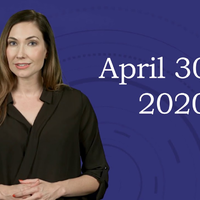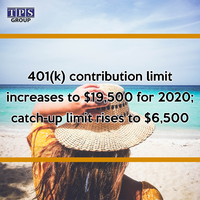- TPS Group
- Articles
How a Cash Balance Plan Works
Posted on Jan 20, 2020
Each participant has a hypothetical account balance which grows annually in two ways: first, a principal credit, which is a contribution usually defined as a percentage of pay, and second, an interest credit, which can be guaranteed rather than dependent on the plan’s investment performance.
Continue readingUnderstanding How Forfeitures Work in Your Retirement Plan
Posted on Jan 14, 2020
When we talk about 401(k) retirement plans, we sometimes focus on the contributions made by employees that are always immediately vested. In other words, it's their money and they can always withdraw it without forfeiting any - subject to certain IRS rules about early withdrawals.
Continue readingIs One Toke Over the Line? What Employers Should Know about Weed at Work
Posted on Jan 3, 2020
As more and more states legalize marijuana for medical and recreational use, employers are increasingly faced with legal questions about their drug-free workplace policies, including pre-employment drug screening.
Continue readingSexual Harassment Training in CT: Are Employers Prepared?
Posted on Dec 13, 2019
As of October 1, 2019, a new law called the “Time’s Up Act” significantly expands sexual harassment training requirements for Connecticut employers. Previously, only employers with 50 or more employees were required to provide sexual harassment training to managers and supervisors.
Continue readingIt’s Time to Restate Your Defined Benefit Plan Document
Posted on Dec 5, 2019
Your Defined Benefit plan is modeled on a pre-approved prototype or volume submitter document that’s part of a cycle that must be restated every six years. It’s important to know that the deadline to restate your plan is April 30.
Continue readingEncourage Greater Participation with a QACA Safe Harbor
Posted on Nov 22, 2019
To avoid uncertainty about nondiscrimination tests as you—a company owner—maximize your own retirement savings, you can choose to make additional contributions for your employees. These contributions give you a free pass on these tests. They’re called “Safe Harbor” contributions.
Continue readingIRS Announces 2020 Pension Plan Limitations
Posted on Nov 18, 2019
The Internal Revenue Service announced that employees in 401(k) plans will be able to contribute up to $19,500 next year.
Continue readingManaging Millennials: What Employers Need to Know
Posted on Nov 11, 2019
For many workers of the Baby Boomer generation, working long hours and leaving vacation time on the table is not uncommon. A 2016 Bankrate survey found that more than half of Americans with paid time off leave a minimum of seven days of vacation time unused each year.
Continue readingUnderstanding Why a QDIA Matters
Posted on Nov 6, 2019
Auto-enrollment has been proven to be effective in raising participation rates in 401(k) plans. As a result, it's been pretty widely adopted across the country, especially in mid- to larger plans. Automatic enrollment creates a situation where many employees fail to make an investment election on their own.
Continue readingU.S. Department of Labor Issues Final Overtime Rule
Posted on Oct 15, 2019
The final rule updates the earnings thresholds necessary to exempt executive, administrative, or professional employees from the FLSA's minimum wage and overtime pay requirements and allows employers to count a portion of certain bonuses (and commissions) towards meeting the salary level.
Continue reading










